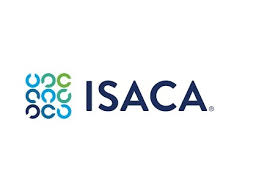Introduction to Data Management, its Types, and Benefits

Data management is not a single practice but a range of processes, encompassing organizing, storing, protecting, and utilizing files and collected details effectively in order to achieve specific business objectives. All these processes are executed systematically throughout their lifecycle. The lifecycle here represents the journey of data management from creation via various collection methods to archival or disposal.
While managing, it is always crucial to ensure that the data in its cycle is accurate, secure, and accessible to the concerned people. These aspects help in introducing integrity and maintaining regulatory compliance. Also, one can easily make informed decisions using it, which certainly ensures growth and scalability.
Types of Data Management
Let’s understand various types of data handling practices that help achieve data-driven purposes.
1. Data Governance
Data governance refers to one of the crucial data management services, which include practices, policies, procedures, and standards for regulating files and folders within an organization. It covers a broad range of roles and responsibilities that are must-haves for establishing data quality standards and following compliance or regulations like GDPR. All of these practices help to create a framework that typically defines stewardship, handling quality, metadata management, security, and compliance management. Its stewardship touches on different aspects of handling or supervising data management meticulously.
2. Data Quality Management
The second type is concerned with the quality management of datasets. Under it, data specialists ensure the flawlessness, completeness, consistency, and reliability of the collected datasets. All of these quality metrics are achieved through proper and excellent profiling, cleansing, standardization, and enrichment. All these subsets help in properly segmenting, formatting, de-duplication, and completing datasets. This is how a company manages high-quality databases, which certainly impact decisions. They prove more real and more productive. Also, the end results attract the trust of stakeholders.
3. Data Integration
Data integration is all about combining data from multiple sources and then standardizing them to create a unified version of those details. Certainly, a series of processes like data extraction, transformation, and loading (ETL) are involved in collecting disparate files at a place. These processes contribute to data integration, which enables organizations to gain insights into data sources and improve data consistency. Once done, it supports analysts in making realistic decisions through generated reports and drawn business intelligence.
4. Master Data Management (MDM)
Master data management is the practice of combining identified critical datasets, which can be related to customers, products, or employees across an organization. This is done by creating a single authoritative source of master data that can be shared and synced across all connected systems or concerned departments within an organization or over a server. Considering how crucial these details are, the collected datasets are refined, scrubbed, and enriched while eliminating silos. This type of data handling aids in the accuracy of data, resulting in reliable outcomes.
5. Metadata Management
Metadata management involves the capture of key details to be handled meticulously. Considering how crucial it is to search for specific data from descriptive information, which can be related to data assets, their structure, content, or usage, For this purpose, certain repositories are created to store metadata, and to manage them, certain rigorous protocols are outlined to establish their governance. Simply put, metadata handling simplifies data discovery, analysis, and lineage. This is how the process of discovering and understanding data within a short span can be possible.
6. Data Security
Data security is a must to protect sensitive datasets from unauthorized people, cyberspies, changes, and destruction. This is possible if you align security controls like encryption, authentication, and authorization. These controls help proactively protect sensitive details from public view. Besides, certain measures are important to take, which can include masking and anonymization, to overcome security risks and comply with privacy rules.
7. Data Privacy
It’s like the privacy of a person. Personally identifiable information (PII) is sensitive and can be harmful if it is publicized. Considering how vital it is to secure PII, certain privacy regulations like GDPR and HIPAA, which actually consist of privacy policies, These policies emphasize obtaining consent for data processing and providing rights to access, alter, rectify, or delete personal datasets. Besides, companies can employ anonymization or encryption methods to add an extra layer of protection to sensitive information.
8. Data Storage and Archiving
Data storage and archiving are related to handling data carefully. These practices involve selecting, filtering, and managing server or storage infrastructure to store data securely within budget. In order to maintain this type of data management, one has to select appropriate storage technology, such as databases on spreadsheets, warehouses, the cloud, etc. And then comes data backup by replicating and defining disaster recovery strategies. This is how data is made available when needed. In addition, certain retention policies and procedures are drafted to archive data as per legal, regulatory, and business requirements.
Benefits of Data Handling
It’s difficult to count the advantages of efficient data management. Certainly, there are multiple benefits that organizations across various industries can leverage.
To start with, its effective handling enables easy access to accurate and reliable data, which definitely builds a concrete foundation for any business decision, such as how to increase sales, achieve scalability, etc. Organizations find easy ways to make informed decisions, identify trends, and discover insights into sales, customers, trends, pricing, competitors, or anything else. This lays the foundation for developing plans that really deliver desirable results.
Another benefit is related to data security and compliance. With hundreds of scams going around, it’s a necessity to introduce discipline as per regulations like GDPR so that sensitive information can be prevented from being misused. It also minimizes data breaches and hooks people into trust.
Furthermore, this management practice refines operational efficiency because processes within the organization are streamlined with minimal errors and duplication. The centralized access to data enables teams to work together and achieve organizational goals effectively.
Moreover, this method allows organizations to innovate ways for next-level growth and a solid foundation while leveraging artificial intelligence and machine learning. Embracing these advanced technologies can help in analyzing vast amounts of data within a few minutes, which brings new opportunities into light. This is how the way to establish new products and services is defined, which definitely gives it a competitive edge in the market.
Conclusion
Data management is a well-defined sequence of activities or processes that encompass organizing, storing, protecting, and utilizing data effectively. This process has a number of benefits and types that guide data specialists to achieve their goals related to realistic decisions and strategies for growth.



